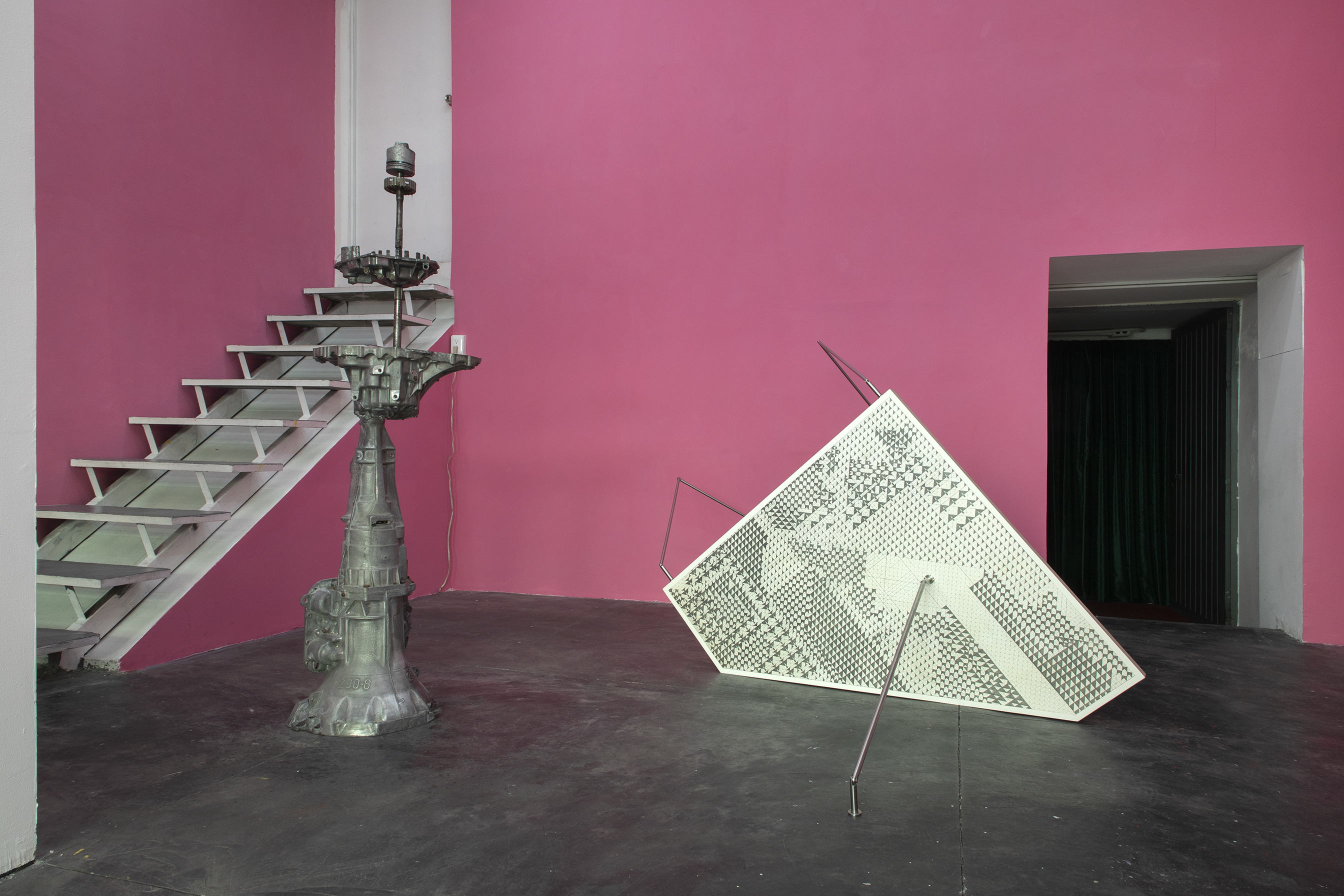


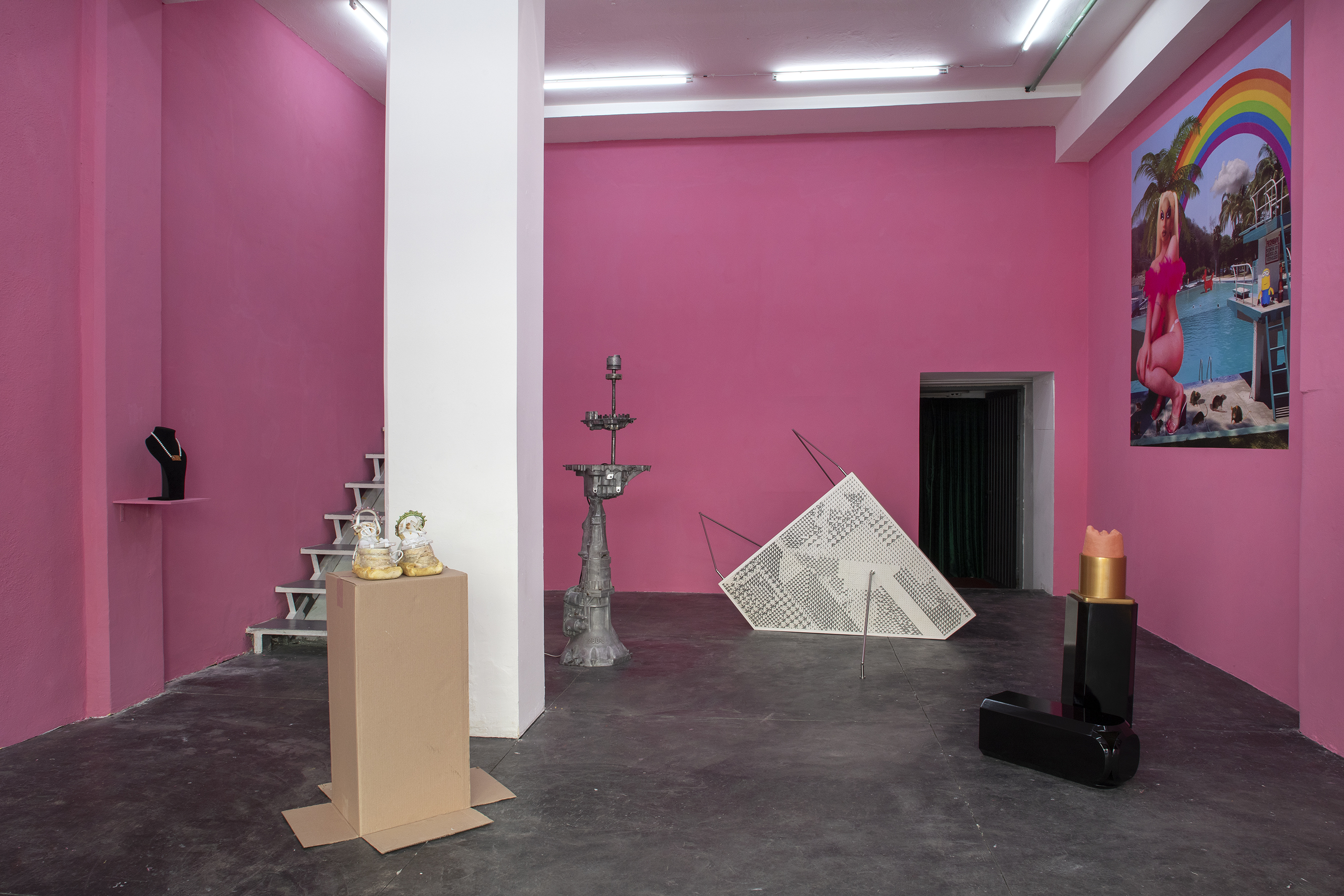
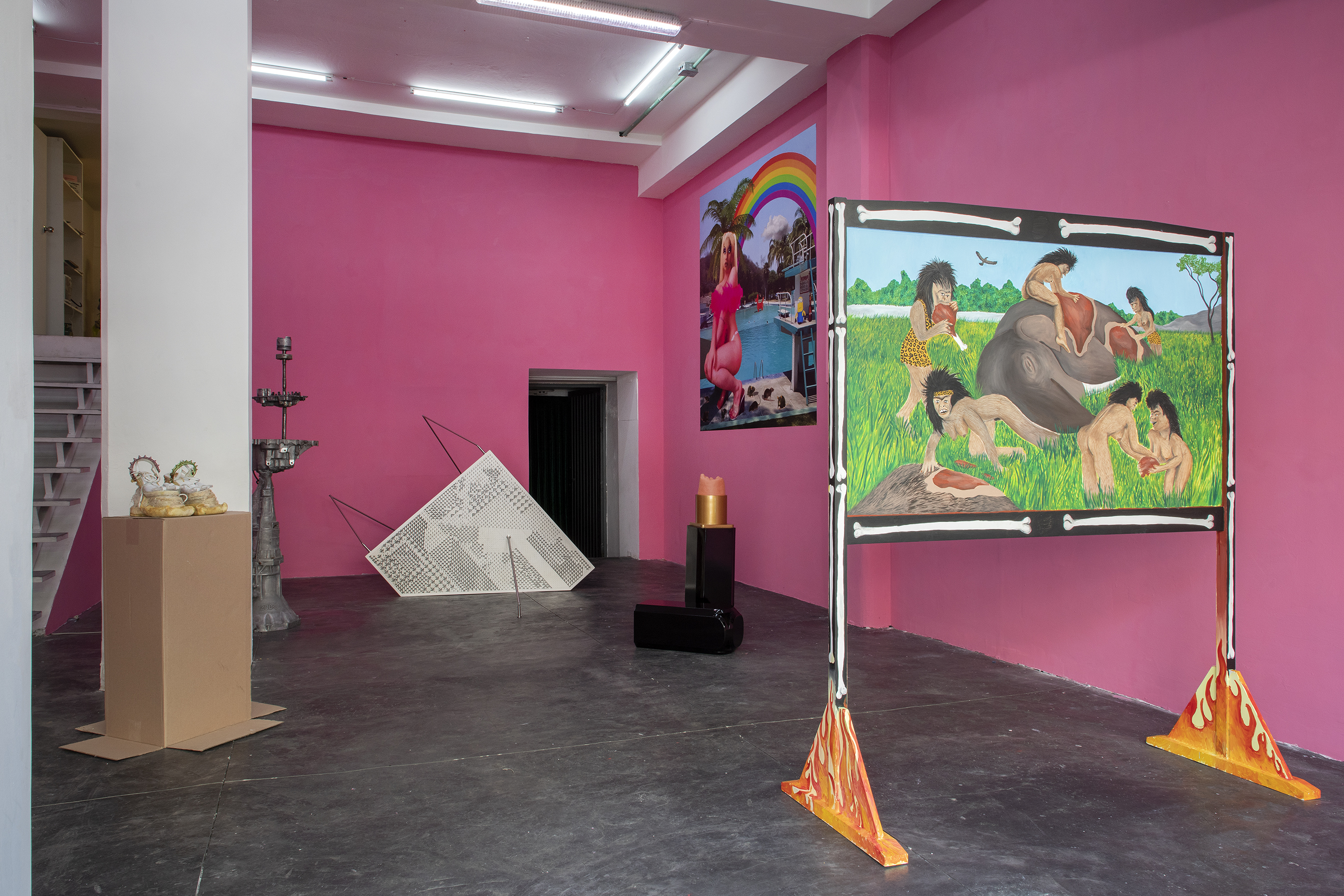
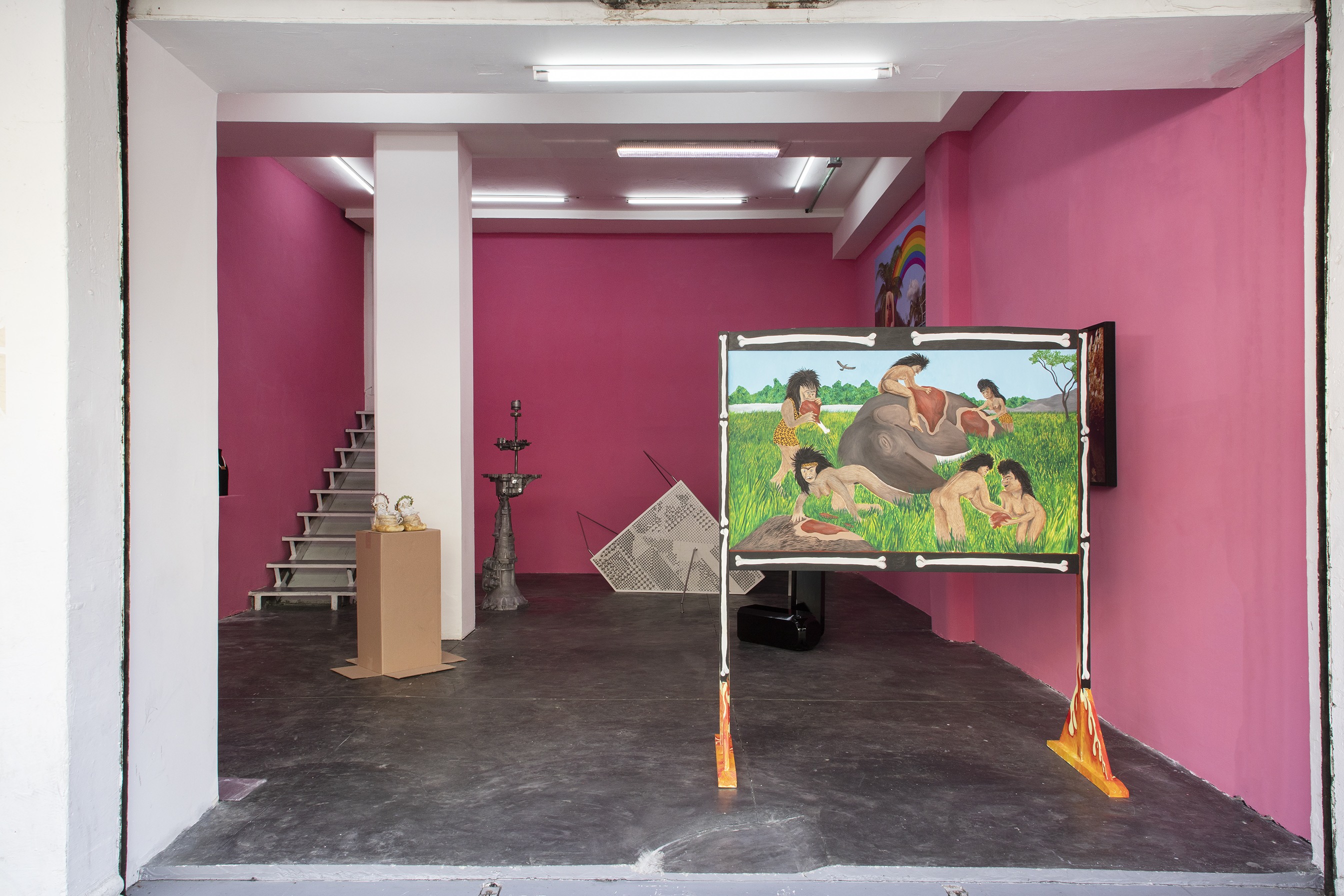

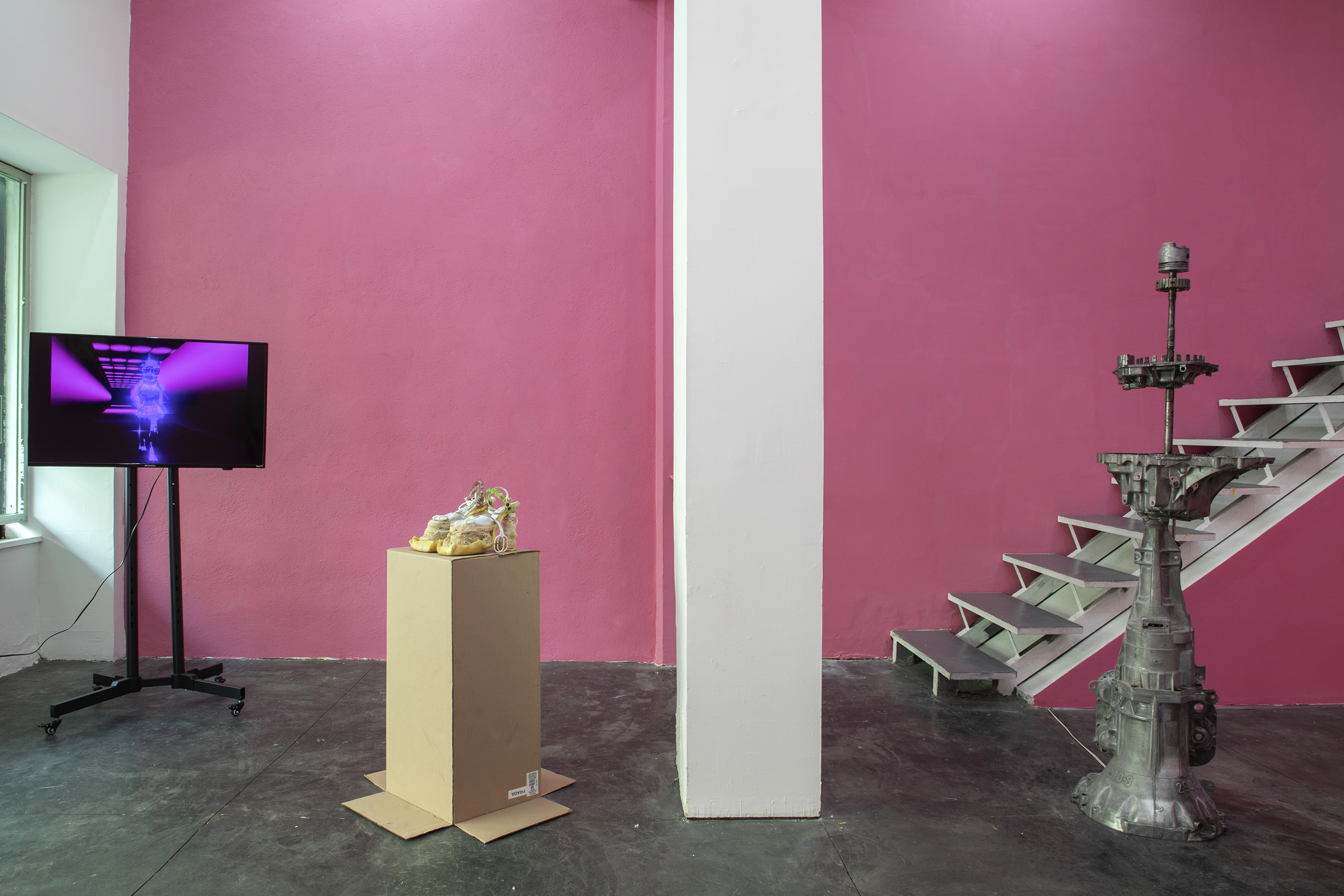
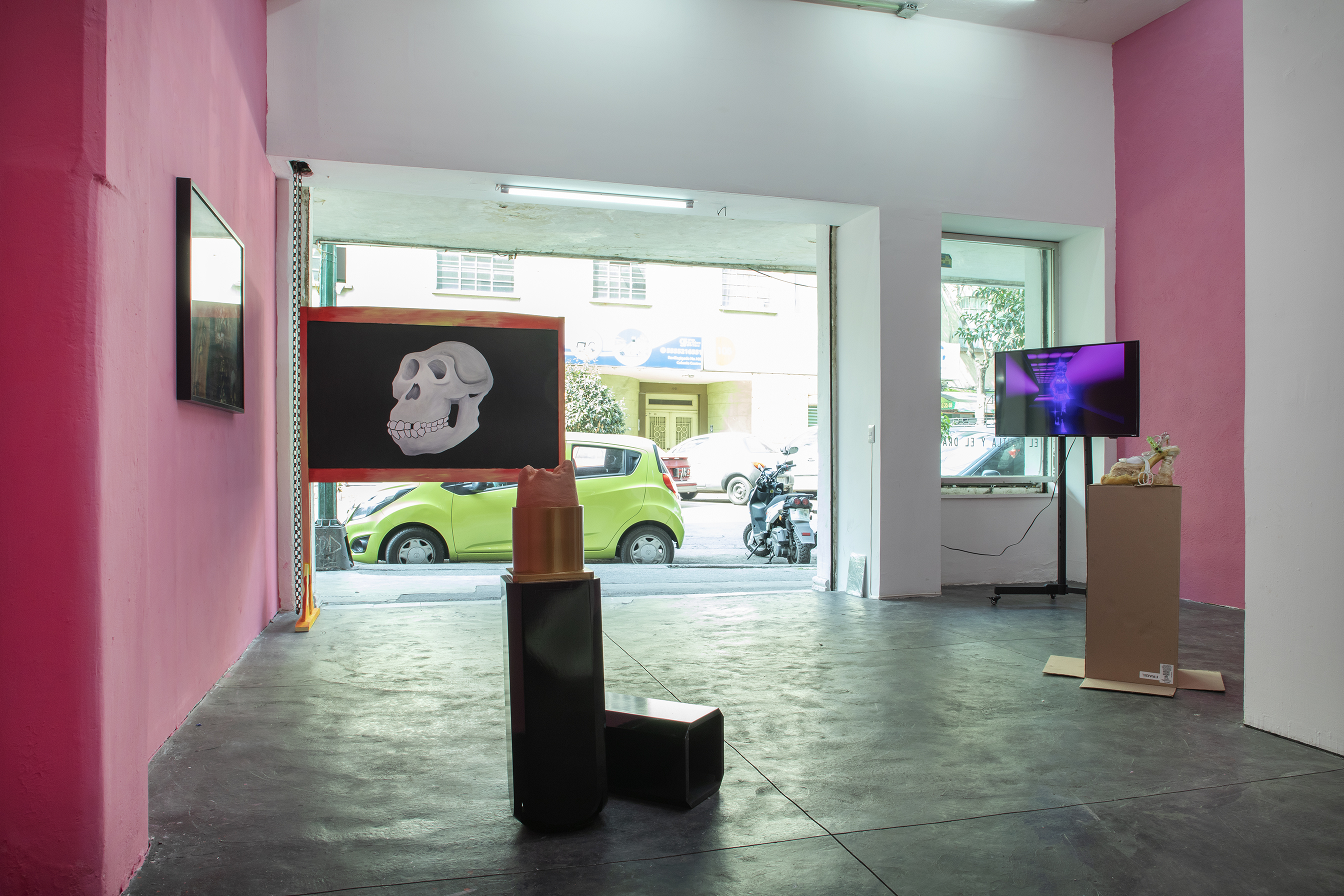



Arte de Zorras
The ‘arte de zorras’ (translated as “Slut Art”) is outlined as a conglomerate of aesthetic manifestations, mainly generated by women and feminised bodies. It appropriates the patriarchal stigma of 'being a slut', of embodying promiscuity on different levels, from slut to whore, from being interested to a prostitute. This appropriation is also a vindication of the tools that are used to shame, humiliate and control female bodies and sexuality: it is a tracing crossed with humour, terror and sexual capital. Moreover, the exhibition seeks to expand the representations of seduction, of its relation to the camp and pop culture, to filters, prosthetics, avatars and the technologies of beauty and hyper-sexuality, of work and sexual consumption, as new forms of existing in predetermined sexed bodies.
The word ‘zorra’ (which literally translated means female fox) is not surprisingly defined in the dictionary as a canid mammal, with an elongated snout and steep ears, reddish-brown and very thick fur –especially on the tail– with a white tip. It is crepuscular and nocturnal. Among the colloquialisms of the term, only in its feminine meaning in Spanish is it defined as a synonym for prostitute. Whereas the masculine meaning alludes to desirable characteristics –being intelligent or cunning– its feminisation historically implies an insult. However, because language works as a strategy for the communities it denotes, the same insult can be re-appropriated as a form of action and response.
The ‘zorra’ in this show claims her own agency, her power to decide on the how and when of her pleasure and the sovereignty of her desire. This zorra is more about leisure and delight, she disdains work and does not seek remuneration; everything she does, she does for pleasure. Sometimes she is 'sexy but not sexual' as Paris Hilton describes herself, and like Julia Fox (Julia Zorra), she is the anti-clean-girl.
This exhibition draws on this journey, gives account of the history and mythology of the zorra and the conditioning factors involved within the insult –which could be added to bitch or witch– in order to explore other ways of facing sexuality.
The word ‘zorra’ (which literally translated means female fox) is not surprisingly defined in the dictionary as a canid mammal, with an elongated snout and steep ears, reddish-brown and very thick fur –especially on the tail– with a white tip. It is crepuscular and nocturnal. Among the colloquialisms of the term, only in its feminine meaning in Spanish is it defined as a synonym for prostitute. Whereas the masculine meaning alludes to desirable characteristics –being intelligent or cunning– its feminisation historically implies an insult. However, because language works as a strategy for the communities it denotes, the same insult can be re-appropriated as a form of action and response.
The ‘zorra’ in this show claims her own agency, her power to decide on the how and when of her pleasure and the sovereignty of her desire. This zorra is more about leisure and delight, she disdains work and does not seek remuneration; everything she does, she does for pleasure. Sometimes she is 'sexy but not sexual' as Paris Hilton describes herself, and like Julia Fox (Julia Zorra), she is the anti-clean-girl.
This exhibition draws on this journey, gives account of the history and mythology of the zorra and the conditioning factors involved within the insult –which could be added to bitch or witch– in order to explore other ways of facing sexuality.
Artists: Betty Árbol - La Cholla Jackson - Madeline Jiménez - Claudia Maté - Daniela Rossell - Murakit - Samuel Nicolle - Isaac Olvera - Katia Tirado - Triste Trópicos - Tatyana Zambrano
Curators: Gaby Cepeda - Natalia de la Rosa and Lic. Sniffany Garnier Odio
Curators: Gaby Cepeda - Natalia de la Rosa and Lic. Sniffany Garnier Odio
